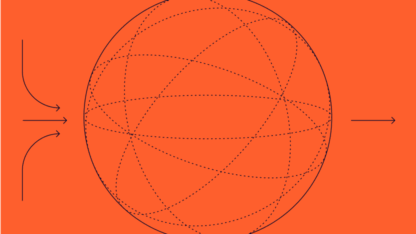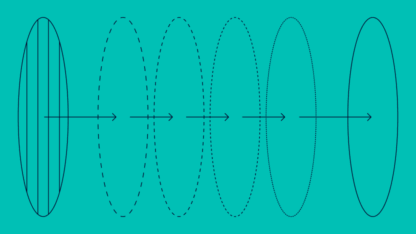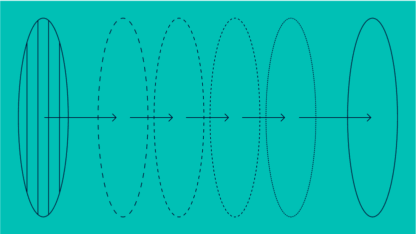The global financial crime environment is changing fast, and criminals are no longer limited to one type of activity. Instead, bad actors blend fraud, cybercrime and money laundering tactics into fluid, multi-vector attacks that exploit the gaps between fraud and anti-money laundering (AML) functions.
Recent industry research confirms that fragmentation undermines effective defense systems. Organizational silos and disconnected technology mean that only 2% of global financial crime is properly detected. Modern attackers exploit these gaps by fusing fraud and AML tactics. They move illicit value across channels and geographies faster than point-solution defenses can react. In some cases, they progress from account takeover (ATO) to laundering funds through mule networks within hours.
Point-solution fraud prevention or AML compliance AI models are trained on narrow data sets for isolated use cases. They struggle to identify today’s cross-functional threats, as they lack the contextual awareness needed to spot linked events. If AI solely focuses on device data or transaction histories, it may miss the patterns that signal organized activities. This shift from fragmented detection to contextualized, AI-driven insight helps teams not only see isolated incidents but also connect the dots between threats, enabling a far more proactive and resilient response.
Even when organizations attempt to manually stitch together data across fraud and AML functions using business analytics teams, significant challenges remain. Data lags and errors frequently surface, as fragmented systems struggle to keep up with coordinated threats. Moreover, continually updating and maintaining these manual integrations demands ongoing resources, which are often limited, rendering teams vulnerable as criminal tactics evolve.
AI That Sees the Whole Picture
Leading organizations are adopting AI architectures designed to correlate signals across all available sources, from device and email data to IP addresses, behavioral biometrics and payment metadata, at a single decisioning layer. This is horizontal intelligence: a unified approach that connects data points across the whole user journey, uncovering anomalies spanning multiple data types and accounts.
As financial institutions and regulated entities increasingly face high transaction volumes and investigative workloads, such comprehensive overviews allow for swifter, more accurate case resolution (and are an essential competitive edge).
Network Analysis to Reveal Hidden Relationships
As criminals employ more sophisticated tactics, ranging from synthetic identities to highly organized syndicates, the ability to understand relationships between users, accounts, devices and transactions becomes critical. Network analysis, built on the principles of horizontal intelligence, empowers organizations to surface hidden connections that would otherwise go unnoticed if examined in silos.
The most damaging forms of financial crime often involve multiple counterparties and cross-channel collaboration, making it essential to analyze not only individual events but also the networks in which they occur. Most solutions create graph maps to score the strength of associations between entities, identifying patterns indicative of fraud rings, mule account operations or serial abusers. Advanced solutions go beyond network graphs and use pattern detection to rank related users by connection strength and overlapping data points, so you know exactly where to start investigating.By visualizing these links and prioritizing investigation around high-risk clusters, organizations can move beyond reactive alerting, enabling them to disrupt coordinated criminal activity before it spreads further through their systems.
A Global Fraud, Risk & Compliance Trend Report
Explore critical insights and learn what it takes to combat fraud in today’s digital age.

Closing the Insight to Action Loop
The potential of horizontal intelligence is realized when actionable insights can be quickly and seamlessly converted into operational defenses. Rather than stopping at detection, leading organizations are investing in technology and processes that ensure intelligence feeds directly into workflows for case management, escalation and risk mitigation. This “closed-loop” approach to financial crime is emerging as a new standard, validated by Deloitte’s 2024 research, which underscores that integrating detection, decisioning and response workflows yields significant improvements in both efficiency and effectiveness.
Analytics engines powered by machine learning and AI, now central to detecting fraud with AI and ML, are increasingly able to translate complex, multidimensional findings into human-readable rules or automated triggers. For example, analysts can now frame risk scenarios in natural language, prompting AI to generate corresponding policies or filters that adjust to new typologies in real time. As a result, institutions can respond to evolving threats with unprecedented agility, rapidly deploying interim controls or targeted reviews without waiting for lengthy change cycles.
Just as importantly, this integration feeds verified decisions, such as confirmed fraud cases (e.g., bonus abuse or account takeover) or false positives, to flow back into model retraining and logic updates. Over time, feedback-rich environments continuously improve both precision and recall, reducing noise for frontline teams while making it harder for bad actors to slip through the cracks.
Ultimately, organizations that operationalize intelligence and maintain dynamic feedback between analysts, models and controls position themselves to keep pace with resourceful adversaries. The difference between mere detection and agile interdiction is closing the loop, ensuring every insight quickly influences risk posture and response.
The Unified Intelligence Advantage
Siloed technologies and compartmentalized operations have proven vulnerable to the tactics of organized criminal networks, which move horizontally across business lines, data sets and geographies. Fragmentation generates blind spots, which allow sophisticated attacks to flourish undetected and erode confidence in both internal controls and external oversight. Integrated data and AI capabilities, and those with unified risk architecture, can move faster, see further and contain incidents more effectively than peers stuck with fragmented or manual processes.
Horizontal intelligence, underpinned by real-time data correlation, automated feedback loops and contextual network analysis, is rapidly becoming the foundation for resilience. Businesses that execute with this shift are building a structural advantage in an increasingly unforgiving digital world.









